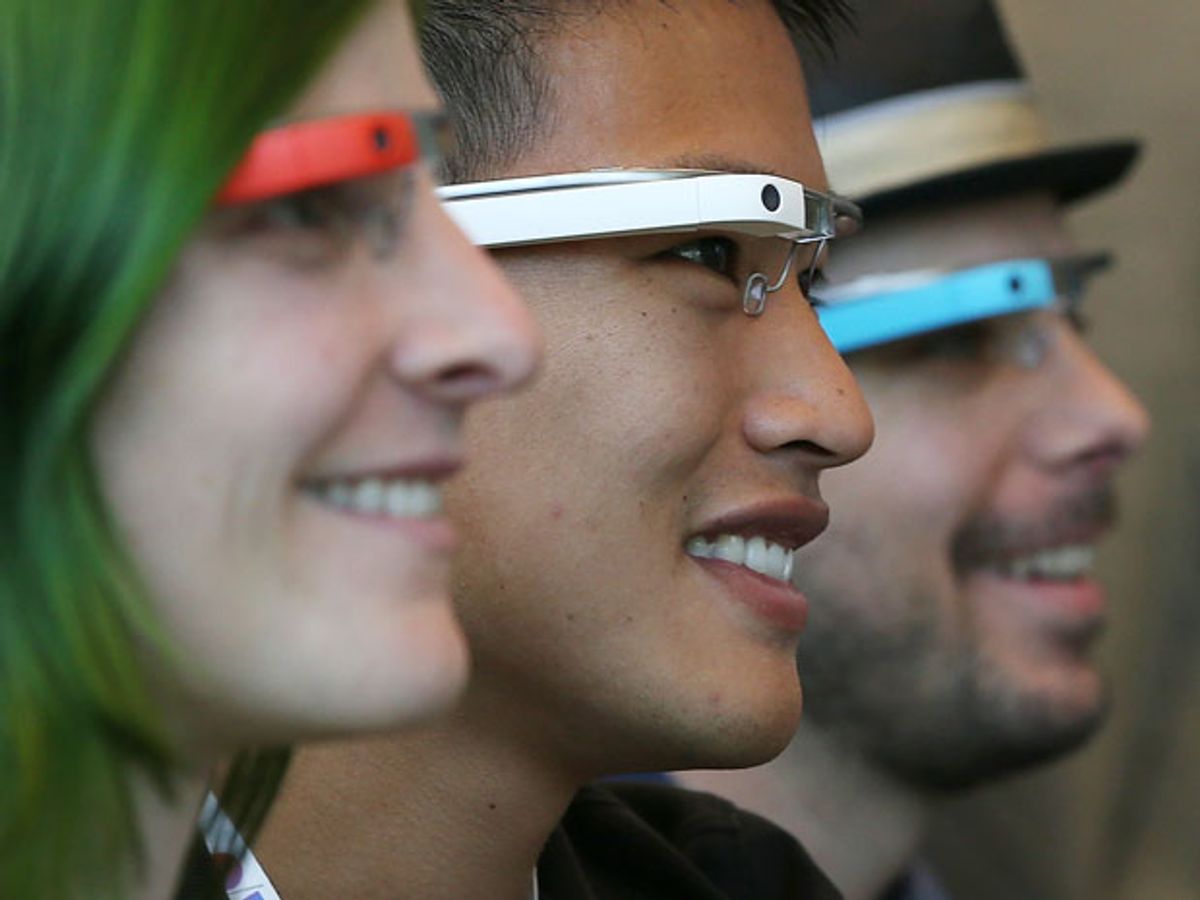Google has assured Google Glass wearers that they won't suffer the annoyance of ads popping up in front of their vision anytime soon. But a newly-approved Google patent on "pay-per-gaze" advertising could instead track how long smart glass wearers look at advertisements in the real world—and charge advertising companies accordingly.
The pay-per-gaze patent was designed for a "head-mounted gaze tracking device" that seems to fit the description of Google's smart glasses rather well, according to the Bits blog of the New York Times. That would allow Google to charge fees to advertisers based on whether a person looks at a real-world ad, and even scale fees depending on how long the person gazed at an ad.
Google quickly clarified that it had no intention of immediately building any products based on the patent. Members of the Google Glass team also told the Times that they similarly had no intentions of incorporating the patent into their smart glasses, and pointed out how it was "filed years ago." (The patent, first uncovered by Fast Company, was filed on May 11, 2011 and approved on August 13, 2013.)
Other tech companies have already begun selling eye-tracking technology for gauging people's responses to ads. Many go beyond what Google's patent envisions by offering products that track gestures and emotional responses alongside eye movements. For instance, TruMedia Technologies offers a facial recognition system capable of targeting display ads at passersby based on their gender, age, and how long each person gazes at a particular ad.
Google has also repeatedly insisted that Google Glass will not have built-in facial recognition technology—it doubled down on that stance this year by banning third-party developers from developing such apps for its smart glasses.
Still, it's easy to imagine at least three different levels of advertising that could theoretically work with Google Glass or similar smart glasses in the future.
The most unobtrusive level for Google Glass wearers might include the eye-tracking method for charging advertisers based on how long wearers look at real-world ads. A second level could involve digital ads popping up in a smart glass wearer's view depending on what real-world scene he or she is gazing upon. And a third level of advertising could deliberately replace real-world ads in a wearer's vision with virtual ads, according to wearable computing experts.
If the future advertising blitz remains restricted to existing real-world ad spaces, smart glasses wearers may yet have a chance to enjoy their augmented reality without distracting popups. Just don't be surprised in the future to see a highly personalized ad pop up on that huge Times Square display in New York City.
Photos: Google; Justin Sullivan/Getty Images
Jeremy Hsu has been working as a science and technology journalist in New York City since 2008. He has written on subjects as diverse as supercomputing and wearable electronics for IEEE Spectrum. When he’s not trying to wrap his head around the latest quantum computing news for Spectrum, he also contributes to a variety of publications such as Scientific American, Discover, Popular Science, and others. He is a graduate of New York University’s Science, Health & Environmental Reporting Program.




